My Corner Online
Camassia esculenta var. leichtlini | Camas, Quamash, Indian Hyacinth, Camash, and Wild Hyacinth
2021 – first bloom
2022 April 21
2023 April 17
2024 April 8

Camassia esculenta var. leichtlini | Camas, Quamash, Indian Hyacinth, Camash, and Wild Hyacinth
Asparagaceae (Asparagus Family) (Pronounced ah-spare-a-gay-see-eye)
Pronounced Cah-MASS-ee-ah Ess-kew-LEN-tuh Var. Lict-LIN-ee-eye
The name "Camassia" is from the Native American Indian name of "kamas" or "quamash" as it was used by native Americans and settlers as a food source. Even Lewis and Clark ate them during their expedition! The name "esculenta" means edible or good to eat and often refers to edible roots. The name "leichtlini" is named after Max Leichtlin (1831-1910) of Baden-Baden, Germany.
The plants are bulbs and grow in the wild.
The naked stems rise above the leaves before the flower appears.
The flowers have six petals and mine are blue-violet. The flowers are star-like florets that bloom from the bottom up. They make great cut flowers! They really stand out in my garden.
Like most bulbs, the foliage needs to die back so the nutrients go back into the bulb to bloom the next year.
The plant can be propagated by dividing the bulbs after the foliage has died back. Alternatively, dig up all of the bulbs and replant them.
Camas are eaten similarly to an onion in that the bulb is the main root vegetable. Bulbs may be pit roasted for up to 24-48 hours, dried, Bulbs bigger than the thumb are eaten and those smaller are replanted. Just like an onion, clean the out skin and break off the crown. Steam the camas for 36 hours in a steamer inside of a crockpot and covered with water. That's a day and a half! Recover with water as needed. The Camas will brown and begin to smell sweet like molasses, and will end up a dark brown. This process breaks down the bulb similarly to making caramelized onions which sweetens them. The cooked Camas may then, if desired, be squished flat with the bottom of a glass, dehydrated, and frozen for rehydrating at a later time to eat. Since it is a two-day process to cook, they are often prepared in bulk and preserved to eat later.
The plant was formerly in the Lily family, part of the subfamily of Schilloidea (formerly the subfamily of Hyacinthaceae). Isn't that confusing! But I have several plants that have taken that naming path. This is why the common names include the word "Hyacinth" although to me it looks nothing like a Hyacinth.
Now the plant is in the Asparagaceae family and subfamily Agavoideae.
I do not have a tag for my Camassia, but based on the comparisons, I have guessed it is a leichtlini species:
The quamash (qwah-MASH) species is the common variety and is shorter (11 inches), has vivid purple petals and vivid yellow stamens. 5 tepals turn up and 1 turns down.
The leichtlinii (leect-LIN-ee-eye) species is taller (35 inches aka 3 feet) and is pale blue or purple.
2024
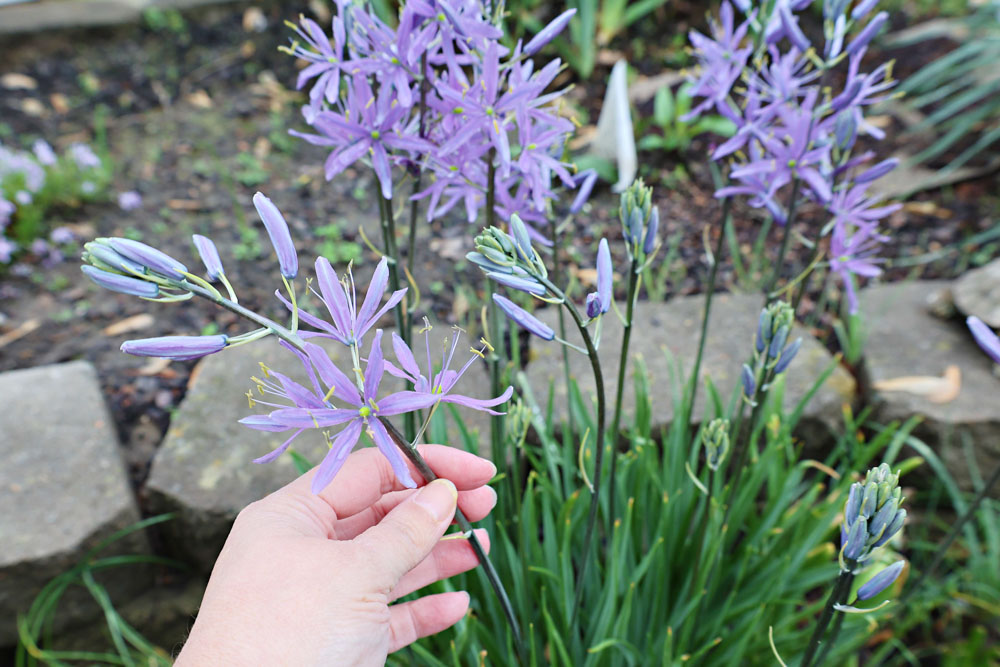
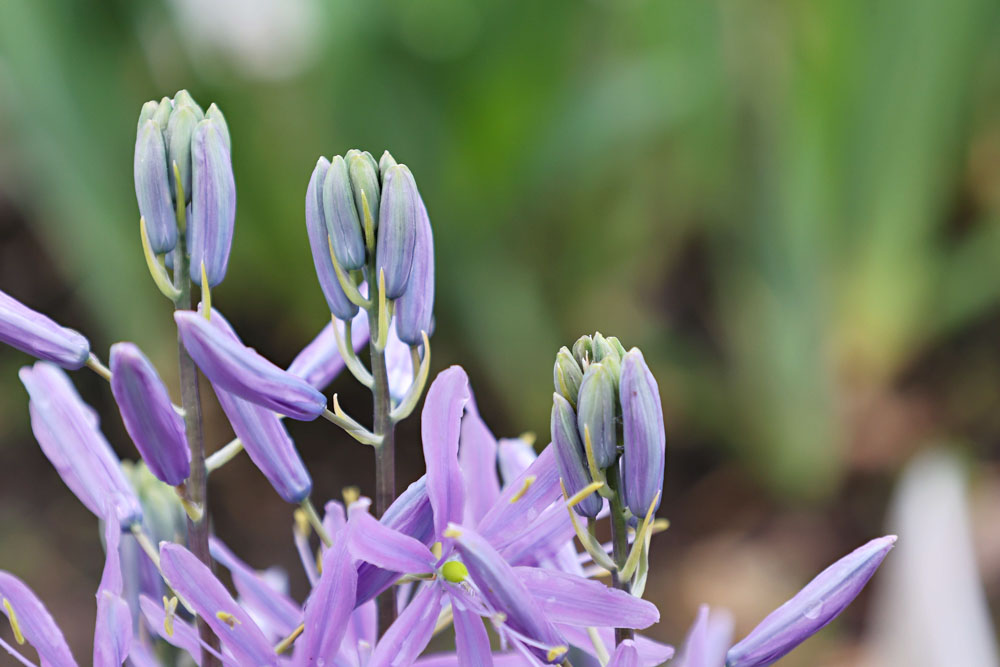
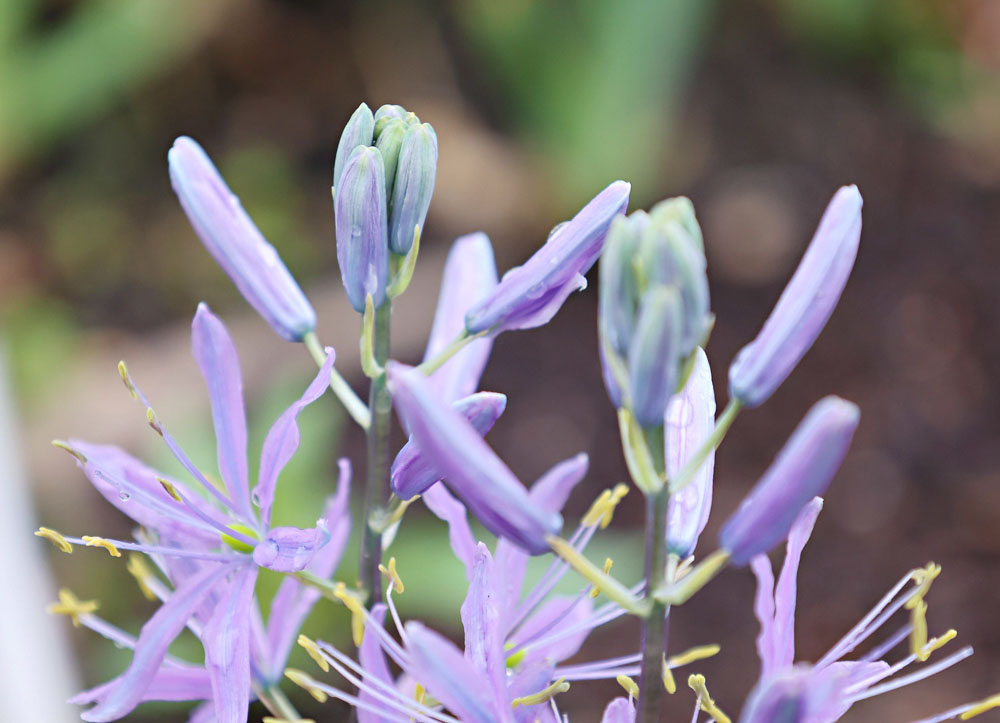

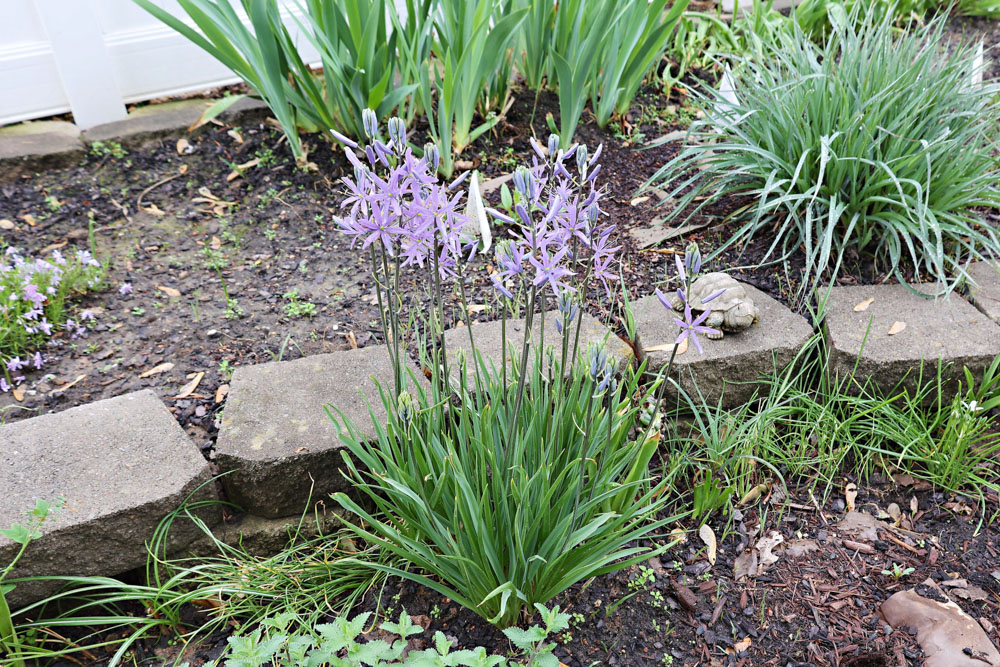
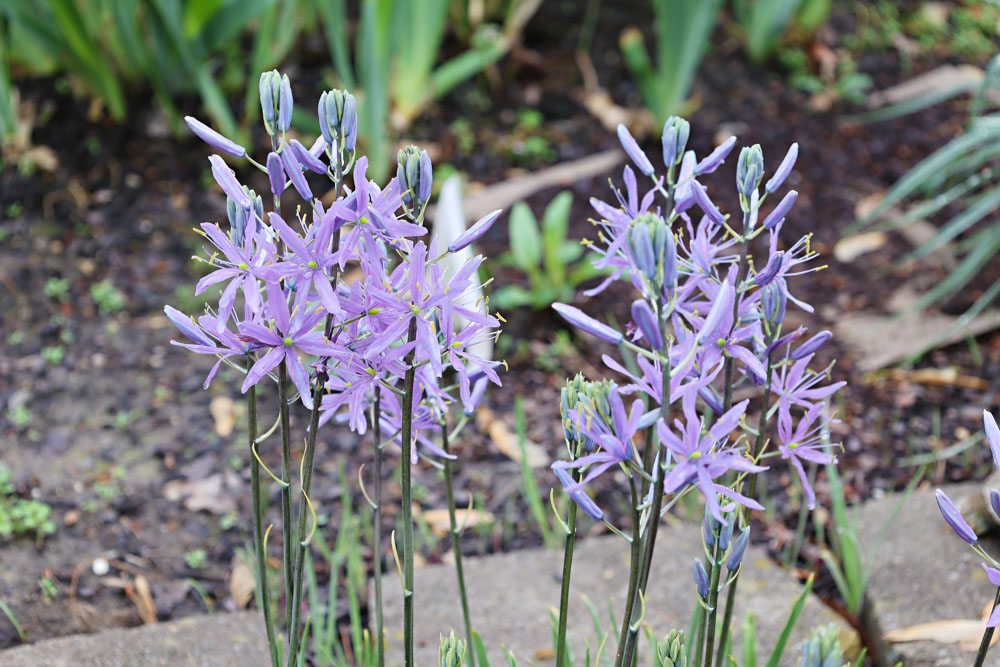
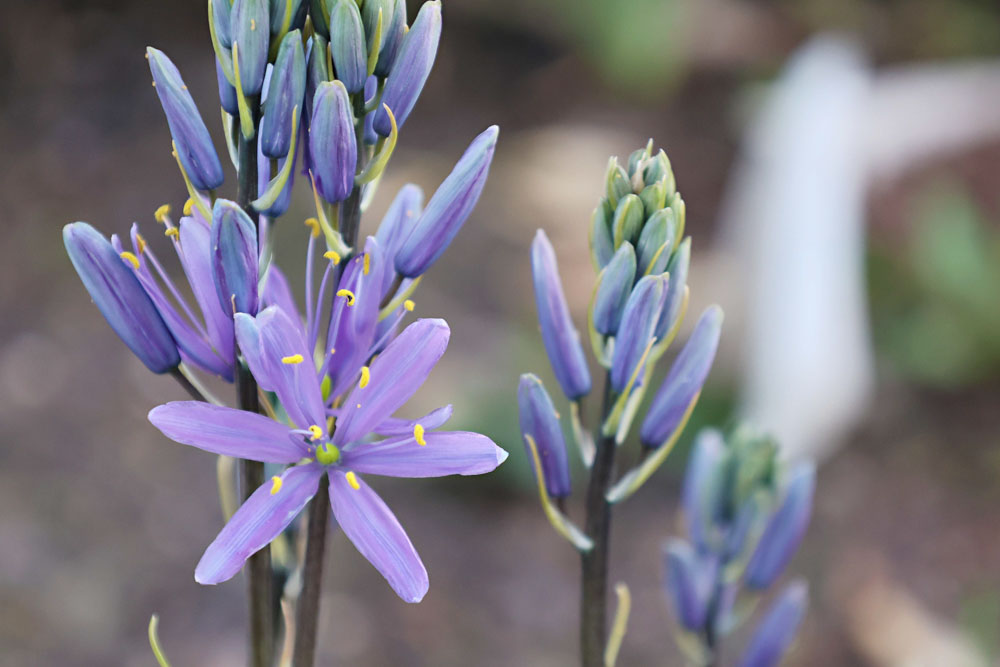
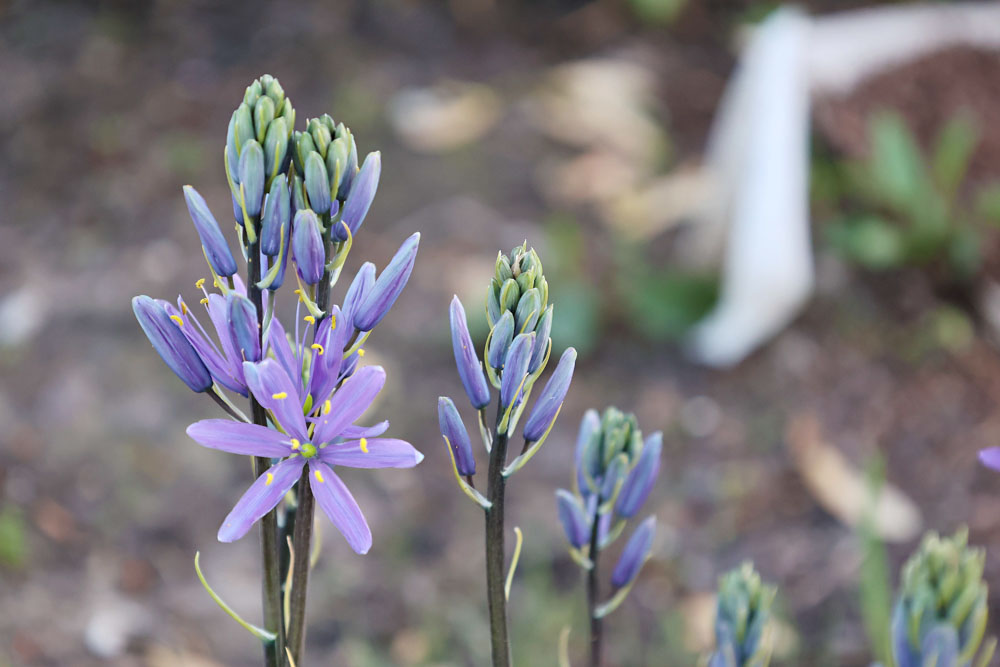
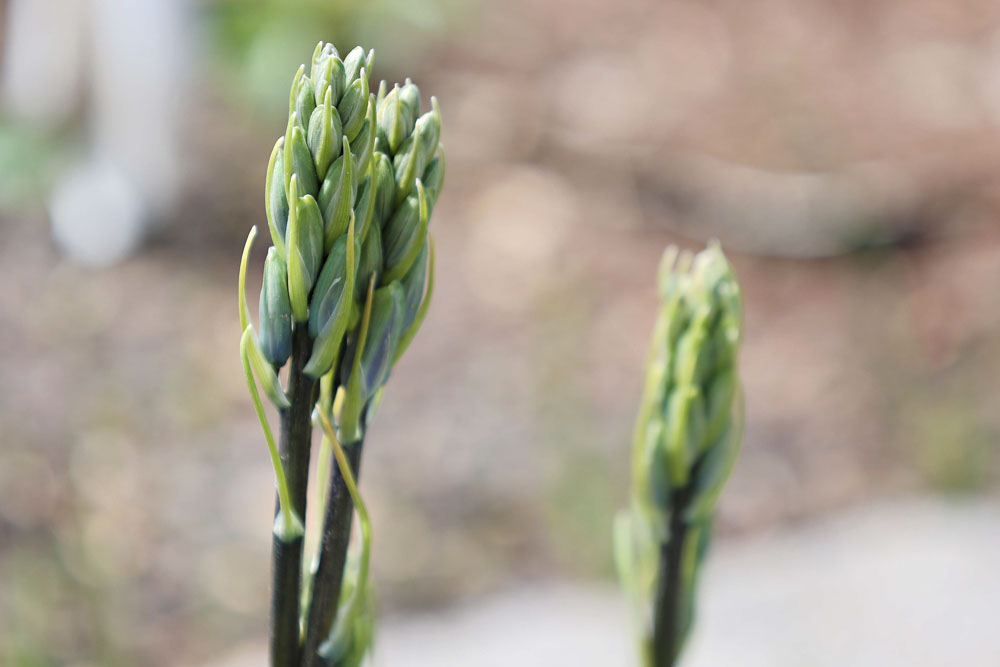
2023

2022
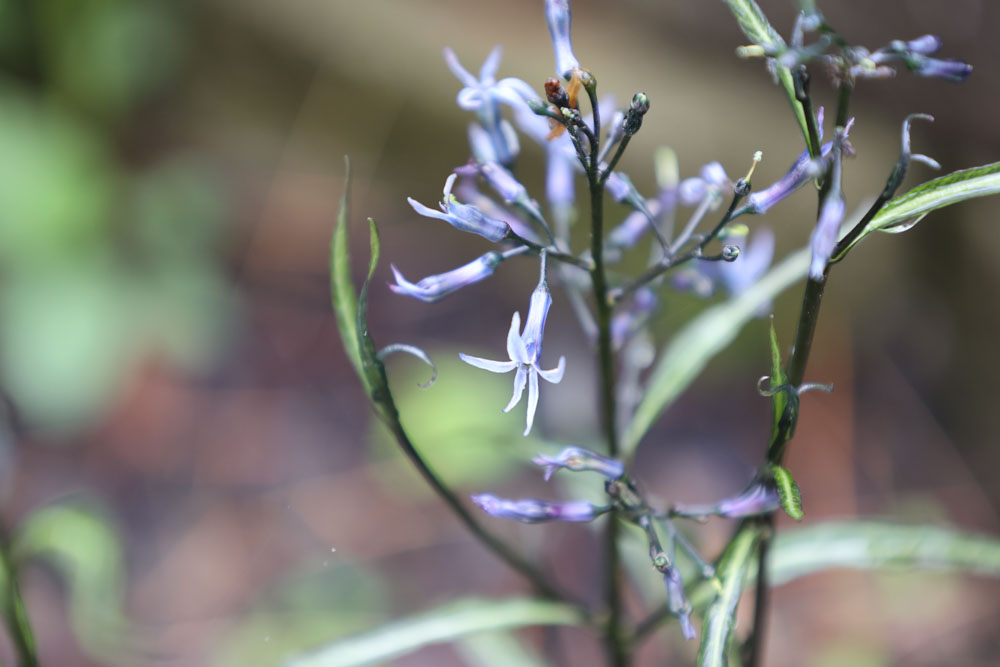

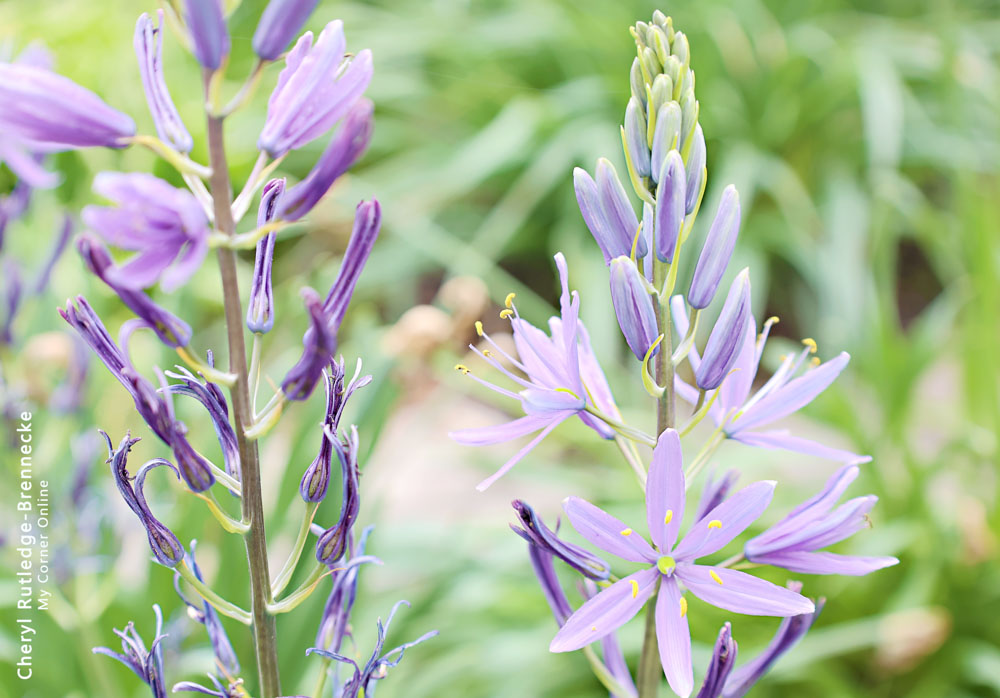
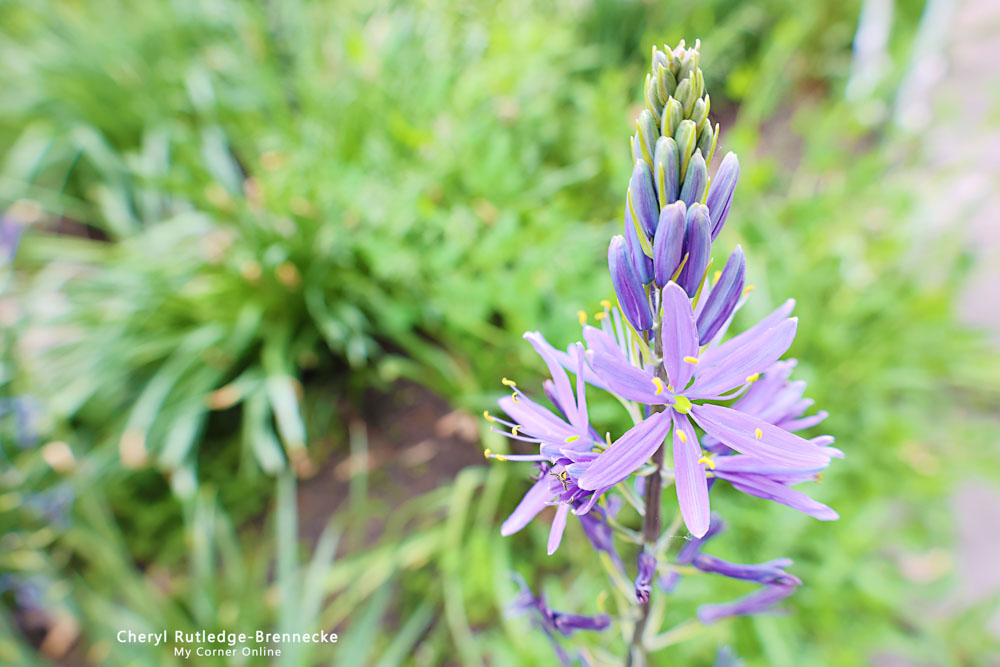
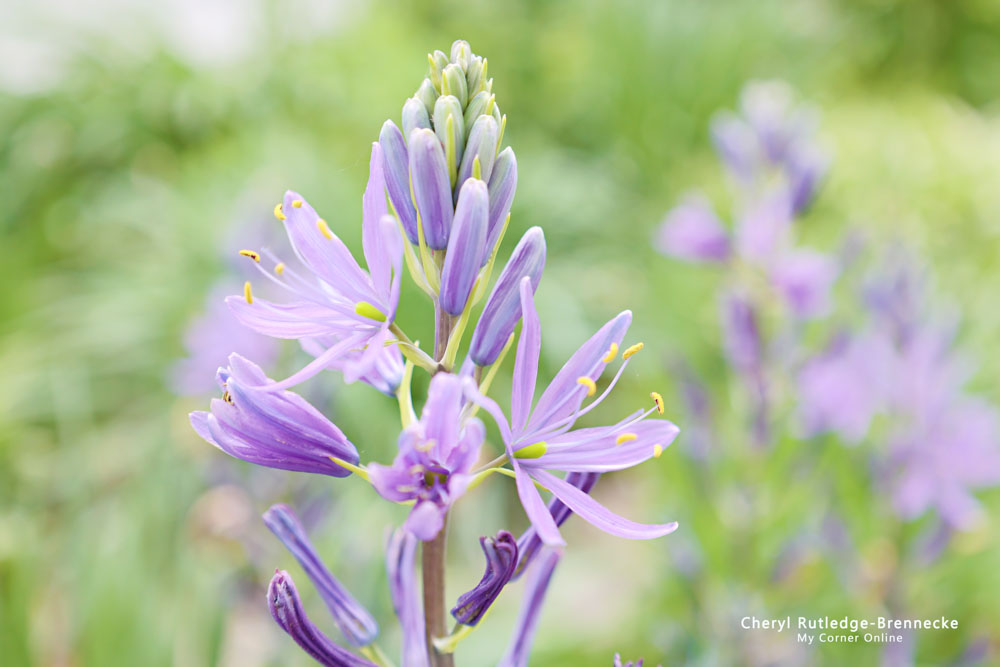
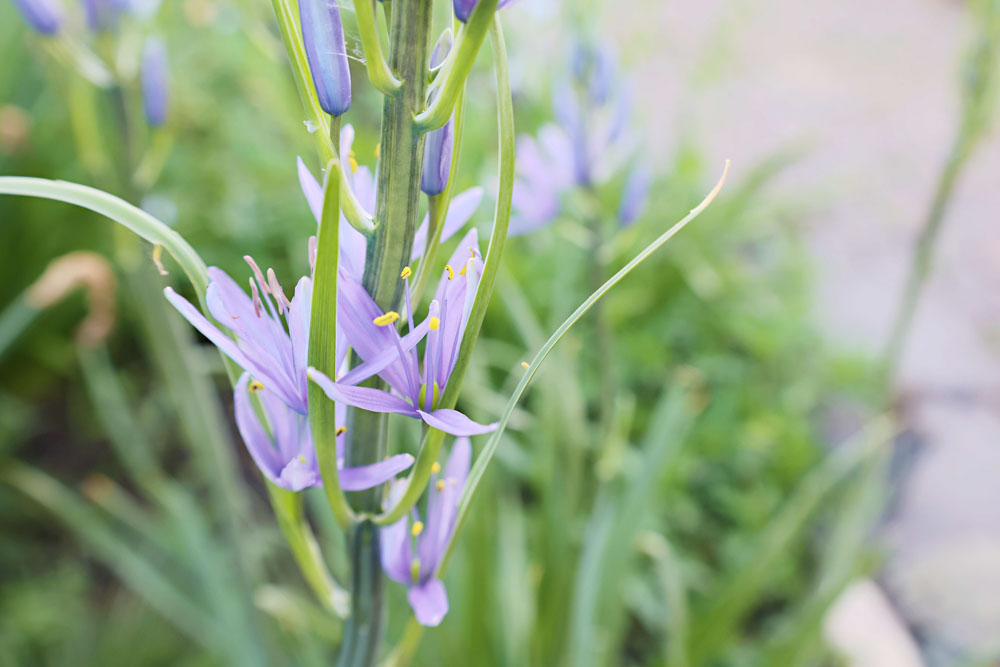

2021
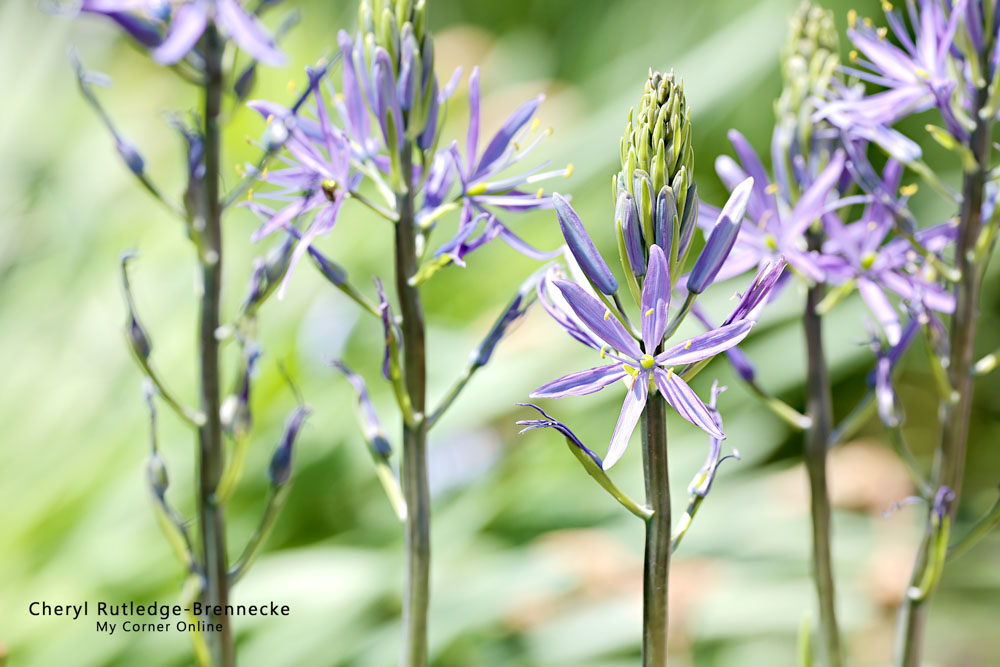
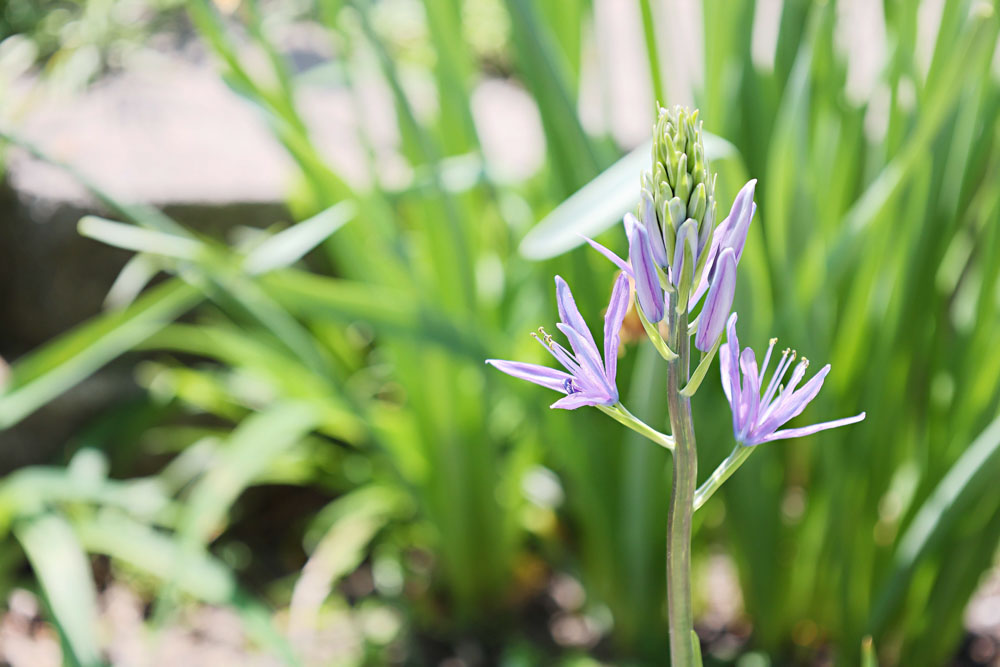
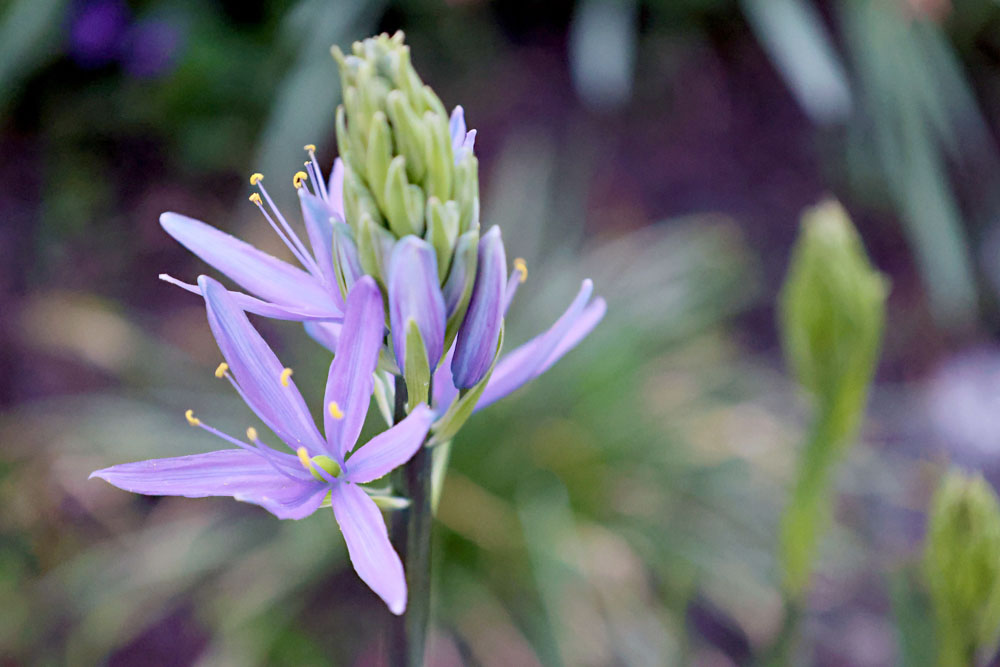
2020
 Indian Hyacinth Edible Roots.jpg)
I think I bought these on Etsy because I have this image I saved named "2020-09-11 Native Blue Lily Camassia Leichtlinni (Caerulea) Indian Hyacinth Edible Roots"